Interpretation of the new subsidy policy for new energy vehicles: the average slope is 50%, and the land compensation is cancelled and replaced by electricity.
As expected in the market, the new energy subsidy policy was officially released in 2019. Different from the previous 20% rebate standard, the subsidy standard in 2019 will be reduced by 50% on average on the basis of 2018.
The introduction date of the subsidy scheme for new energy vehicles can be said to be later than one year. The 2017 plan was introduced on December 30, 2016, the 2018 plan was introduced on February 13, 2018, and the 2019 plan has reached March 26, 2019. "yet we called and urged a thousand times before she started toward us, still hiding half her face from us behind her guitar" is really appropriate to describe the new energy subsidy policy in 2019.
Since the wind of the sharp decline in subsidies for new energy vehicles in 2019 has been blowing for several times, different programs have been passed from the end of 2018 to March 2019, and the industry has long had psychological expectations for the programs launched by the central government. Although this plan is very strong, it is all expected, even better than expected.
This time highlights several key points:
Subsidized standard passenger cars fell by 47-60%, and plug-in passenger cars fell by 55%; New energy buses dropped by 49-56%, and new energy special vehicles dropped by 45-80%. Cancel land compensation and subsidize infrastructure such as charging piles/hydrogen refueling stations instead.
The overall adjustment is very strong, which has great cost pressure for enterprises. The product lines of some enterprises will be greatly adjusted, and Ferrous lithium phosphate may make a comeback due to its cost advantage.
Despite the cancellation of land compensation, the subsidy policy for new energy buses will be introduced separately, and the determination of urban electrification will not be reduced.
Since electric vehicles have met the market conditions, the focus of policy support has shifted to fuel cell vehicles. Fuel cell vehicle subsidies will be refined according to different technical standards, and fuel cell subsidy policies will be introduced separately.
In the book, the extended range is classified as pure electric, and some experts have also mentioned supporting extended range vehicles after plug-in development to a certain extent. However, in this subsidy policy, the extended program subsidy is still classified as plug-in, and the prospect is worrying.
The payment method of subsidies was adjusted, and the punishment mechanism for safety accidents was put forward.
The following is a detailed interpretation of several key points of this subsidy policy.
One,Central subsidy adjustment
The maximum subsidy for all types of vehicles has decreased significantly, and the endurance and energy density have changed from "encouraging high endurance/high energy density" to "punishing low endurance/low energy density", and at the same time, the minimum energy density threshold has been raised.
(1) New energy passenger cars
The subsidy for passenger cars has changed to two grades, with pure electric slope retreat of about 47%-60% and plug-in slope retreat of 55%.
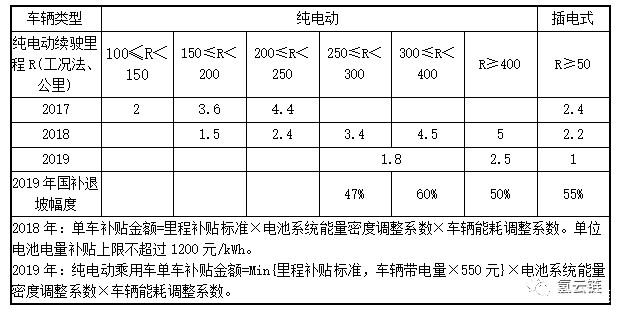
The threshold of energy density has increased from 105Wh/kg to 125Wh/kg, which requires continuous improvement, and the subsidy multiple has been lowered.
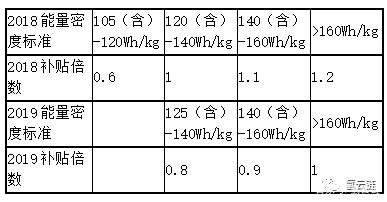
The minimum is raised from 150 kilometers to 250 kilometers, and the standard of energy consumption subsidy multiple is adjusted, which obviously improves the requirements for overall energy saving.

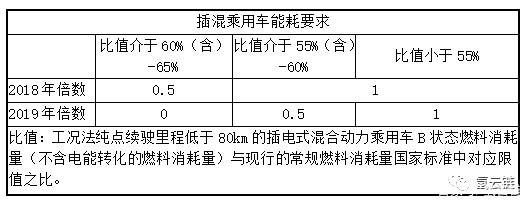
By canceling the subsidy below 250 kilometers, the subsidy multiple of low energy density will be reduced, and enterprises will be encouraged to produce cars with high energy density and high endurance. Combined with the industrial policy of low-speed electric vehicles, low-speed electric vehicles may be responsible for the shorter range below 250 kilometers, and it is difficult for A0 and A00 electric vehicles to compete with low-speed electric vehicles in cost.
Due to the decrease of subsidies and the increase of energy density in Ferrous lithium phosphate, the cost of Ferrous lithium phosphate shows certain advantages, and some enterprises may switch from Sanyuan to Ferrous lithium phosphate in low endurance vehicles.
Some enterprises with relatively backward technology or lack of industrial experience will be under great cost pressure, thus being forced to raise the price of automobile products, reducing the market competitiveness. At present, new car-making forces such as Tucki and others have raised the price of their products.
The leading enterprises have abundant funds and leading technical strength, and have full expectations for subsidies. They will continue to promote the development of vehicles with high cruising range, reduce costs by optimizing design and production, and continuously improve market competitiveness. Therefore, the impact on leading enterprises is not so great, and the mainstream A-class and above vehicles are less affected. The selling prices of Geometry A and Aions newly introduced by Guangzhou Automobile Co., Ltd. and Guangzhou Automobile Co., Ltd. did not reflect the obvious influence of subsidies, while Weimar and Guangzhou Automobile Co., Ltd. introduced the strategy of price protection.
The most important thing is to reduce the amount of subsidies, promote the marketization of new energy vehicles, eliminate the fittest for enterprises, and concentrate the automobile production capacity on advantageous areas and enterprises.
(2) New energy buses
The gradient is 49%-56%, and the minimum energy density is required to rise from 115Wh/kg to 135Wh/kg.
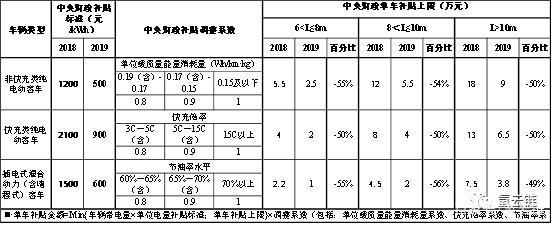
The energy efficiency and subsidy coefficient were adjusted, and the requirement was increased by 5 percentage points.
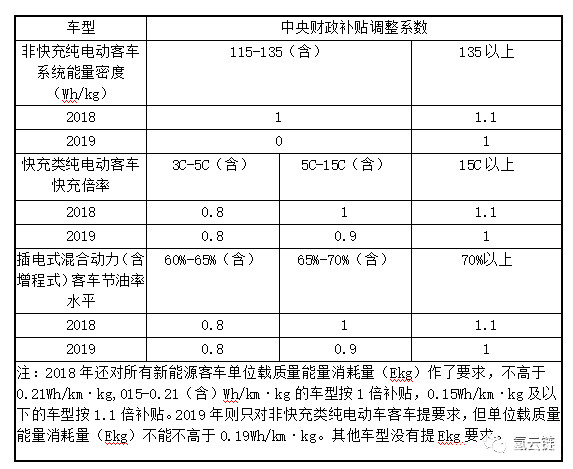
New energy buses may be rushed to install during the transition period.
(3) The new energy trucks have been adjusted in detail.
By simply subsidizing the battery capacity, the weight classification is increased. The maximum subsidy is reduced from 100,000 yuan according to different types, and the reduction range ranges from 45% to 80%.
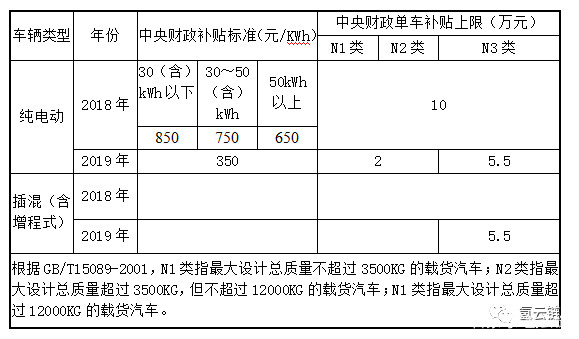
At the same time, the minimum energy density is increased from 115Wh/kg to 125Wh/kg, and the subsidy coefficient is adjusted.

There are two points worthy of special attention in terms of new energy trucks.
1) The subsidy category of "special purpose vehicle" was cancelled, and the classification of total quality of freight cars was increased.
This means that the market develops from logistics vehicles to larger trucks, and even pure electric heavy trucks appear; The subsidy policy for new energy special vehicles was cancelled.
2) The subsidy category for trucks has been added.
Increase market choices, and trucks with a total mass of more than 12 tons can choose the technical direction of plug-in hybrid to adapt to more market changes.
Second, cancel local subsidies and promote fair market development
This is a continuation of the spirit conveyed in the Regulations on Investment Management of Automobile Industry and the Implementation Plan for Further Optimizing Supply, Promoting Steady Growth of Consumption and Forming a Strong Domestic Market (2019), breaking local protection, promoting market-oriented development and creating a level playing field.
At the same time, we will continue to improve the market consumption environment by subsidizing infrastructure construction, and support the development of new energy vehicles through indirect financial subsidies. However, hydrogen refueling station enterprises get development opportunities and can focus on related enterprises.
Despite the cancellation of land compensation, new energy buses will be introduced by a separate subsidy policy, showing the importance attached to urban electrification.
Third, fuel cell vehicles are listed separately, and the degree of attention is unprecedented
Fuel cell vehicles are in a critical period of technological development and market introduction. In the past, the subsidy policy for fuel cells was too simple, which only stipulated the minimum rated power and the minimum cruising range, which also led to the design of the subsidy line for automobile products in the announcement catalogue, all of which were 30KW.

The fuel cell subsidy policy was postponed, presumably in order to refine the subsidy policy and avoid the previous design of fuel cell vehicles under the pressure of subsidy line and the road of pursuing high energy density and ignoring safety like electric vehicles again.
Fourth,Extended-range electric cannot be classified as pure electric.
The extended subsidy policy is still classified as plug-in hybrid. The Investment Regulation of Automobile Industry classifies the investment projects of extended-range electric vehicles as pure electric vehicles, which is considered by many people in the industry as a signal of the rise of extended-range electric vehicles, because the advantages of extended-range electric vehicles can only be reflected when compared with pure electric vehicles, but the competitiveness is weak when compared with plug-in hybrid vehicles.
The subsidy policy for the extended range cannot be classified into pure electric vehicles, so the development prospect of the extended range is worrying, and the "ideal" of the extended range may be "cool".
Five,Emphasize supervision and safety.
Supervision is divided into two aspects: authenticity and security.
Authenticity is achieved by monitoring the operating mileage and adjusting the settlement method. Starting from 2019, for vehicles with operating mileage requirements, a part of subsidy funds will be paid in advance after the sales are registered, and the vehicle enterprises will apply for subsidy liquidation after meeting the operating mileage requirements. If the operation does not meet 20,000 kilometers within 2 years from the date of registration, no subsidy will be granted, and the pre-allocated funds will be deducted at the time of liquidation. This gives enterprises more abundant liquidity and more flexibility to cope with market changes.
Safety emphasizes the consistency of safety accident prevention and product production. The competent authorities of the industry will speed up the establishment of a normal mechanism for product safety monitoring and "consistency" sampling inspection. Suspension or cancellation of vehicles with major safety accidents caused by product quality or with major quality defects identified by relevant departments, and corresponding suspension or cancellation of financial subsidies.
Hydrogen Cloud Chain believes that with the rapid expansion of China’s new energy automobile industry, low-end enterprises that rely on subsidies to survive are doomed to be eliminated, and infants who are breastfeeding will eventually be "weaned". How to ensure quality is the key to "survival".